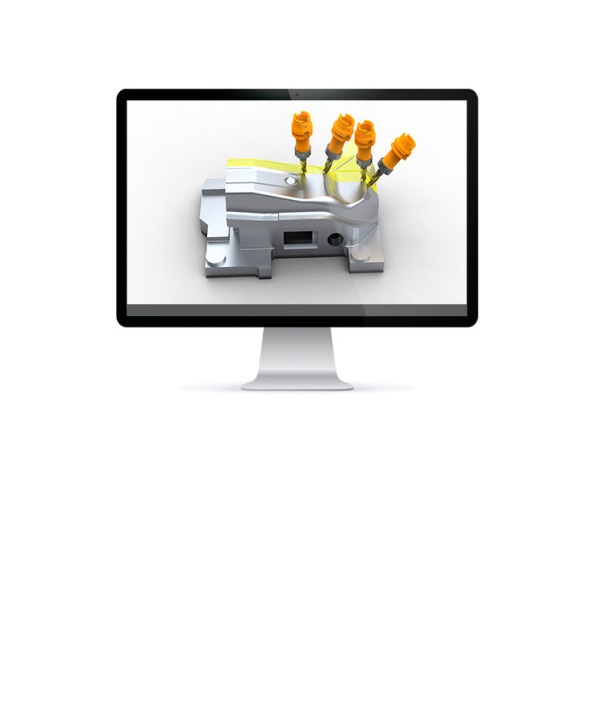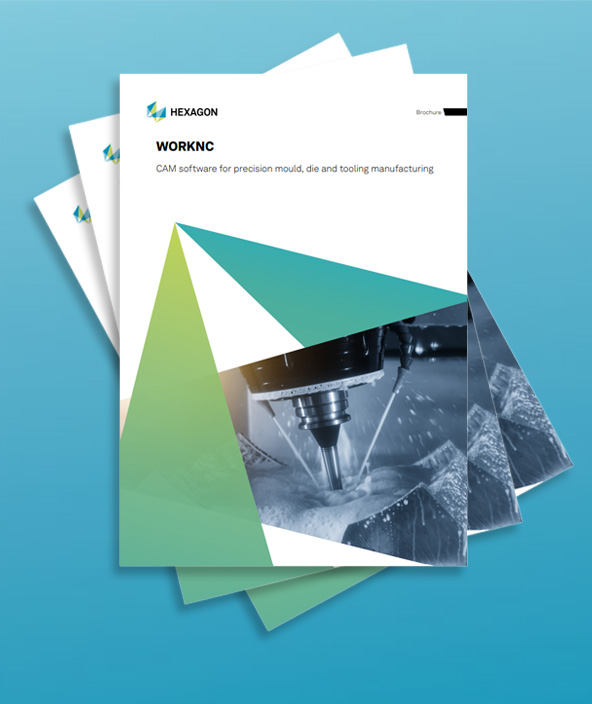Unravelling the mysteries of the universe with WorkNC
CERN - Switzerland
Contact us

Mechanical components produced with WorkNC are used by a research organisation in Switzerland to study the structure of the universe.
The research body is the CERN, the European Organisation for Particle Physics, located in Geneva since 1954.
The organization's physicists and engineers use highly complex scientific instruments to study the basic constituents of matter. The CERN uses instruments such as accelerators and particle detectors. The accelerators produce high energy beams of fundamental particles which are made to collide with other beams or with fixed targets. The detectors are used to observe and record the results of these collisions.
 The EN engineering department at the CERN participate in the production of these components, some of which are manufactured in-house in their own workshops. Approximately 50 people work in the main machining workshop which features around ten 5-axis machining centers, in addition to other equipment, from renowned suppliers such as DMG Mori and Hermle. EN installed its first version of WorkNC in 2016. After realizing just how much the application improved their manufacturing process, they quickly decided to add a further five seats of the software.
The EN engineering department at the CERN participate in the production of these components, some of which are manufactured in-house in their own workshops. Approximately 50 people work in the main machining workshop which features around ten 5-axis machining centers, in addition to other equipment, from renowned suppliers such as DMG Mori and Hermle. EN installed its first version of WorkNC in 2016. After realizing just how much the application improved their manufacturing process, they quickly decided to add a further five seats of the software.
The EN teams hardly ever used the CAM application they had before investing in WorkNC. Pierre Naisson is responsible for implementing CAM applications. "Workshop production was based on 2D drawings whereas programming and quality control uses a 3D model. Our wish was to improve quality and be more reliable from a production point of view."
Each technician looks after one machine and is totally responsible for deciding upon the required machining sequences and taking charge of the part. Advance programming tasks were managed by dedicated programmers not working in the workshop.
"We decided to work inasmuch as possible directly with the 3D models and evaluated several CAM solutions before choosing WorkNC. WorkNC was installed at the same time as the machines were connected to the IT network as part of the ongoing workshop digitization strategy. It was also an intention to implicate the technicians and make the CAM solution available for use directly in the workshop."
"Precision is the core competence of the main machining workshop at the CERN, the number one criterion for our choice of machines… and of course, for our CAM solution."
In addition to its everyday use in the workshop for generating 3 axis and 3+2 axis toolpaths, advanced 5 axis programming is regularly required for machining more complex parts. Parts are generally machined from a solid billet, which Pierre Naisson says requires a highly efficient roughing strategy. He is impatient to roll out WorkNC’s game-changing Waveform roughing strategy, which ensures a high material removal rate, while prolonging tool life.
Workshop technicians use the full range of features to control and edit toolpaths, such as the collision management module. Machining strategies such as Z-level finishing, 3-axis undercut remachining, flat surface finishing, chamfering, and tangent to curve are programmed on a daily basis. "WorkNC also offers the possibility to load, analyze and simulate toolpaths before running them on the machine itself."
"Sometimes, before the machining phase, we are asked to evaluate the feasibility of producing particularly complex parts from very expensive materials. WorkNC allows us to rapidly provide reliable cost and delay estimations, based on the 3D model."
Pierre Naisson concludes: "We have been able to combine the skills acquired by our technicians along with the performance of WorkNC. Together, we have been able to implement a highly efficient production process. Programs are saved and shared over the CERN local network which ensures improved traceability and enhanced efficiency in the workshop from all points of view."
The research body is the CERN, the European Organisation for Particle Physics, located in Geneva since 1954.
The organization's physicists and engineers use highly complex scientific instruments to study the basic constituents of matter. The CERN uses instruments such as accelerators and particle detectors. The accelerators produce high energy beams of fundamental particles which are made to collide with other beams or with fixed targets. The detectors are used to observe and record the results of these collisions.
 The EN engineering department at the CERN participate in the production of these components, some of which are manufactured in-house in their own workshops. Approximately 50 people work in the main machining workshop which features around ten 5-axis machining centers, in addition to other equipment, from renowned suppliers such as DMG Mori and Hermle. EN installed its first version of WorkNC in 2016. After realizing just how much the application improved their manufacturing process, they quickly decided to add a further five seats of the software.
The EN engineering department at the CERN participate in the production of these components, some of which are manufactured in-house in their own workshops. Approximately 50 people work in the main machining workshop which features around ten 5-axis machining centers, in addition to other equipment, from renowned suppliers such as DMG Mori and Hermle. EN installed its first version of WorkNC in 2016. After realizing just how much the application improved their manufacturing process, they quickly decided to add a further five seats of the software. The EN teams hardly ever used the CAM application they had before investing in WorkNC. Pierre Naisson is responsible for implementing CAM applications. "Workshop production was based on 2D drawings whereas programming and quality control uses a 3D model. Our wish was to improve quality and be more reliable from a production point of view."
Each technician looks after one machine and is totally responsible for deciding upon the required machining sequences and taking charge of the part. Advance programming tasks were managed by dedicated programmers not working in the workshop.
"We decided to work inasmuch as possible directly with the 3D models and evaluated several CAM solutions before choosing WorkNC. WorkNC was installed at the same time as the machines were connected to the IT network as part of the ongoing workshop digitization strategy. It was also an intention to implicate the technicians and make the CAM solution available for use directly in the workshop."
"Precision is the core competence of the main machining workshop at the CERN, the number one criterion for our choice of machines… and of course, for our CAM solution."
In addition to its everyday use in the workshop for generating 3 axis and 3+2 axis toolpaths, advanced 5 axis programming is regularly required for machining more complex parts. Parts are generally machined from a solid billet, which Pierre Naisson says requires a highly efficient roughing strategy. He is impatient to roll out WorkNC’s game-changing Waveform roughing strategy, which ensures a high material removal rate, while prolonging tool life.
Workshop technicians use the full range of features to control and edit toolpaths, such as the collision management module. Machining strategies such as Z-level finishing, 3-axis undercut remachining, flat surface finishing, chamfering, and tangent to curve are programmed on a daily basis. "WorkNC also offers the possibility to load, analyze and simulate toolpaths before running them on the machine itself."
"Sometimes, before the machining phase, we are asked to evaluate the feasibility of producing particularly complex parts from very expensive materials. WorkNC allows us to rapidly provide reliable cost and delay estimations, based on the 3D model."
Pierre Naisson concludes: "We have been able to combine the skills acquired by our technicians along with the performance of WorkNC. Together, we have been able to implement a highly efficient production process. Programs are saved and shared over the CERN local network which ensures improved traceability and enhanced efficiency in the workshop from all points of view."


